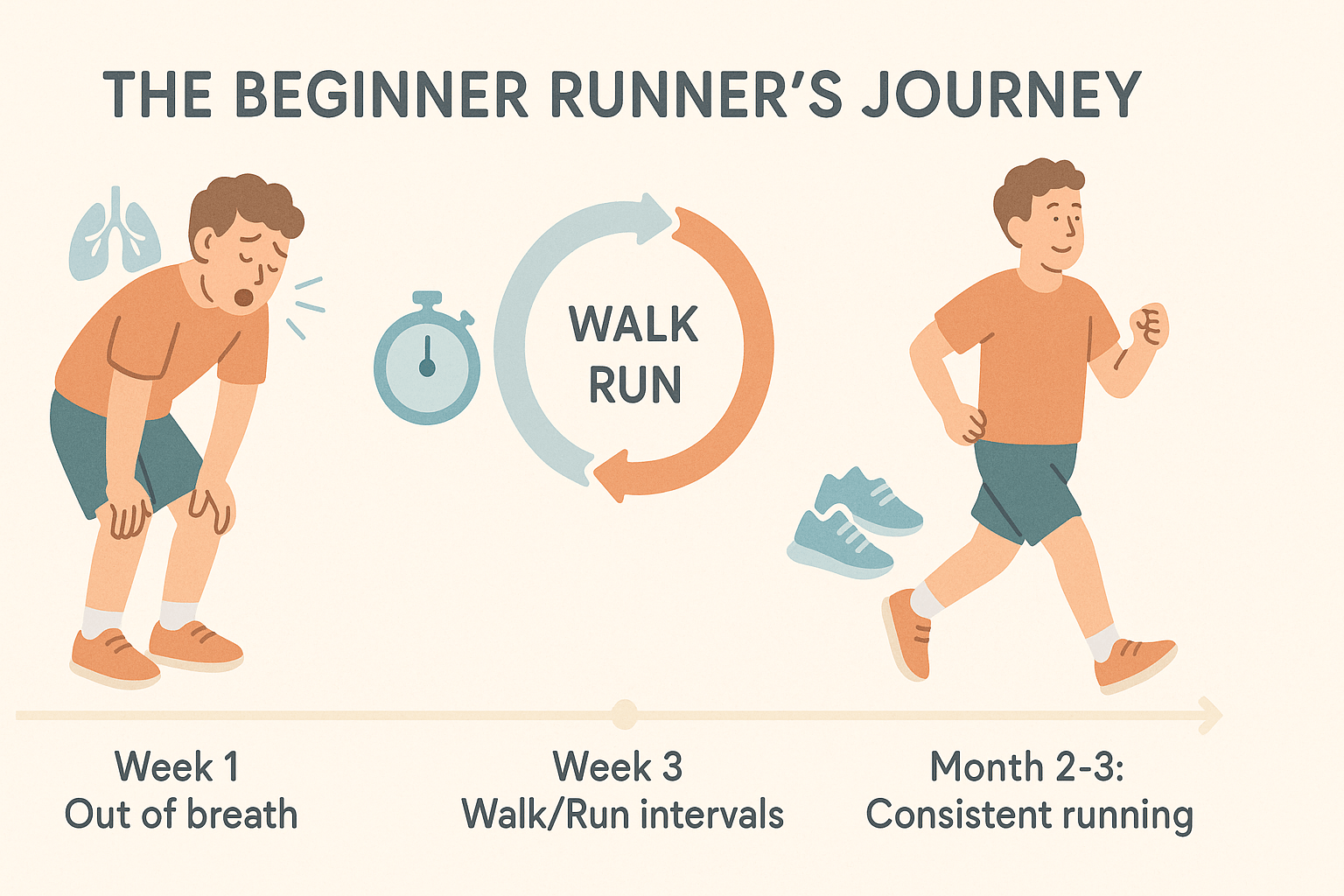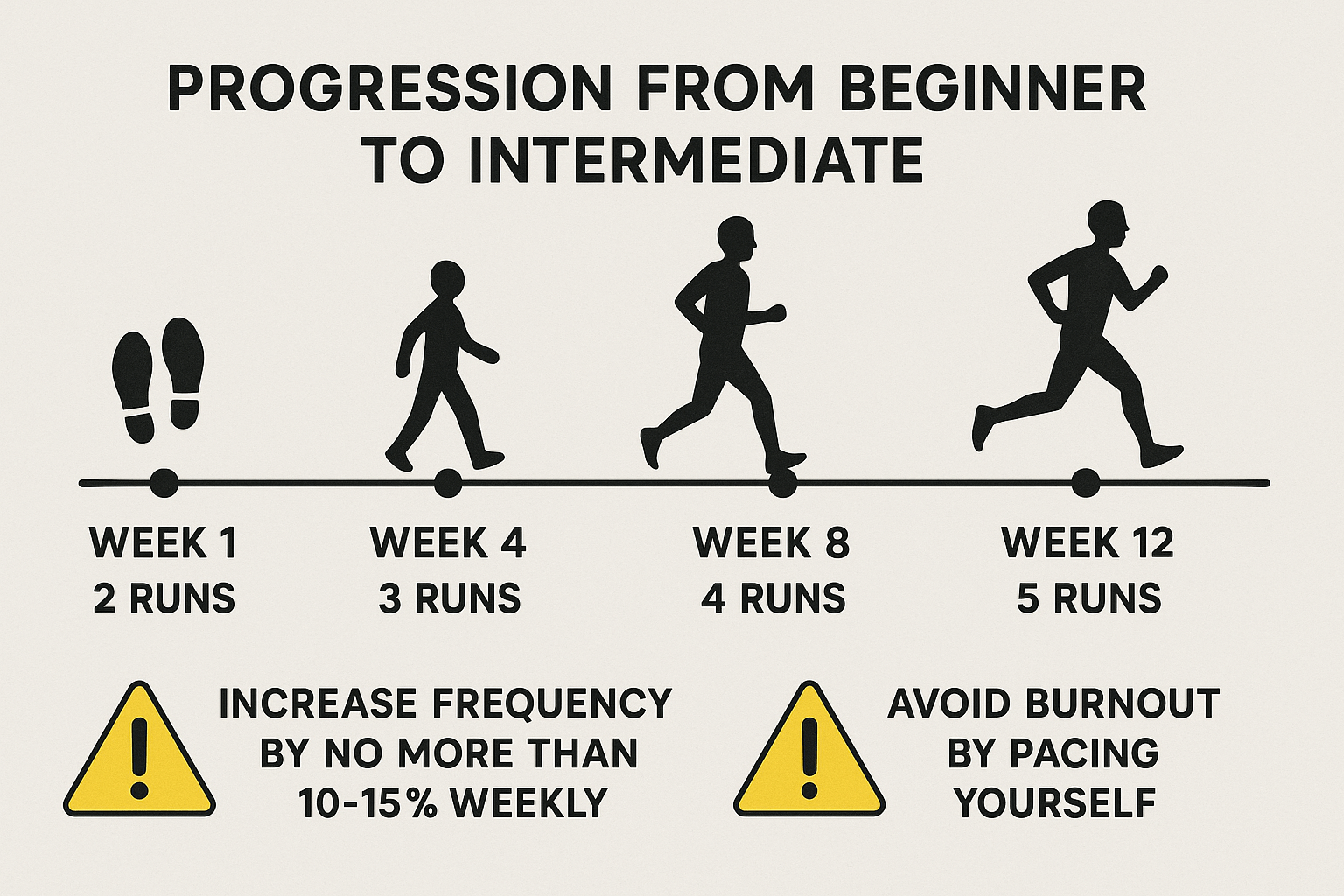You want to go from just finishing to owning it, right?
The key is to build up gradually and listen to your body. You’ve got the drive, but now it’s about being smart. The secret? Work smarter, not harder.
I’ve seen too many runners go all-in too fast, trying to run like they’re training for an ultra, and then they crash and burn halfway through. It’s like hitting a brick wall.
I’ve been there, and I don’t want that for you.
Let’s get to it.
What’s Baseline Mileage?
Let’s break it down.
Your baseline mileage is the number of miles you can handle without feeling like you ran a marathon every day.
It’s not too easy, not too hard—just right. Think of it like finding that sweet spot in a workout where you’re pushing yourself, but still able to breathe easy.
The Golden Rule – Start Small
Here’s the deal—start small.
Don’t try to run 40 miles in your first week. I see runners do this all the time, and it’s a mistake. They go too hard, too fast, and end up sidelined.
Don’t make that mistake.
Think of this like a marathon to build up to your marathon. Start small, and gradually increase.
This isn’t a sprint, it’s a long game.
How to Find It:
Look back at your last 3–6 months of training and find that mileage that didn’t wreck you.
It’s the “I can do this every week” number. That’s your baseline.
Once you’ve got that, it’s about building from there without going off the deep end.
Begin with Walks
Don’t rush it.
Seriously.
If you’re just getting back into it, don’t feel bad about starting with walks.
No shame in that.
Walking is the foundation of your running success.
When you’re ready, you can add more jogging and less walking.
You’re not in a race to get from zero to 10 miles in a week. Get your body used to moving first, and then work up to that 30-minute jog.
The 10 Percent Rule: Small Gains, Big Wins
This is a big one. The 10 percent rule is your best friend. Once you’ve got your baseline, you can start increasing your mileage by no more than 10 percent a week. So, if you ran 20 miles this week, only add 2 miles next week. That’s it—slow and steady.
I’ve made the mistake of trying to jump from 10 miles to 20 miles too fast. Ended up with a messed-up knee for 6 months. Trust me, don’t rush it.
Recovery Week: Because You’re Not a Machine
Even pros need recovery.
After a few weeks of building up, it’s time for a recovery week.
I know, it feels like you should just keep pushing, but that’s how you end up burnt out or injured.
A recovery week means cutting your mileage by 20-30%.
Sounds crazy, right? But trust me, it works. Your muscles, joints, and mind need that time to recover and adapt. You’ll come back stronger the next week.
Watch Your Form
As you add more miles, it’s easy to get lazy with your form.
I’ve been there.
The fatigue sets in, and next thing you know, you’re slouching like a zombie.
Bad form will mess you up more than you think. If you’re slumping, you’re wasting energy and setting yourself up for injury.
Here’s how to fix it:
- Keep your core engaged—this isn’t yoga, but your core needs to be tight to keep good posture.
- Relax your shoulders—don’t tense up. Drop them down and back.
- Swing your arms—don’t let them just hang by your sides. They help keep you moving.
Good form will keep you from hitting the wall when you’re in the last few miles. Trust me on this.
Listen to Your Body
You’re not a superhero. Your body’s going to talk to you. And when it does, listen. If you feel pain, like stabbing pain in your knee or back, don’t ignore it. Your body is saying, “Hey, slow down.” If the pain sticks around, take a break.
Running through pain never works.
And when you feel too fatigued, don’t try to push through. Let your body tell you when it’s time to rest.
Fatigue and chronic soreness are big red flags. Don’t ignore them.
Your Checklist
- Start small, build gradually. Don’t jump from 10 miles to 40 miles in a week. You’ll burn out. Increase your mileage slowly—this isn’t a sprint, it’s a journey.
- Follow the 10 percent rule. Increase your mileage by no more than 10 percent each week. Think of it like building a house—start with a strong foundation before adding more.
- Recovery week every 3–4 weeks. Take a step back (literally). Drop your mileage by 20-30% every few weeks. It helps your body adapt and come back stronger.
- Listen to your body. If your knees are hurting, it’s time to dial it back. Pain is your body saying, “Hey, take it easy.” Don’t ignore it.
- Walk before you run. If you’re starting from zero, walk. Then slowly work your way up to running. Building a strong base is key.
- Mind your form. Bad form will burn you out faster than anything. Focus on posture, arm swing, and keeping your core tight. It’ll save you energy and keep your joints healthy.
Conclusion
Increasing your mileage isn’t about being the fastest.
It’s about being smart. Start small, increase gradually, and listen to your body.
The rest will follow. It’ll take time, but that’s how you build consistent, sustainable progress.
Ready to lace up and get your mileage up? Let’s do this. But remember: slow and steady wins the race.


